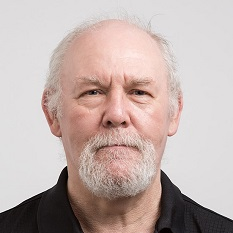Novel Methods for Investigating Biomolecular Interactions
A special issue of Applied Sciences (ISSN 2076-3417). This special issue belongs to the section "Applied Biosciences and Bioengineering".
Deadline for manuscript submissions: closed (25 October 2019) | Viewed by 9806
Special Issue Editors
Interests: biomechanics; silver nanoparticle antibiotic action; metal ions in epigenetics; bioactive supramolecular systems; 3D printing and biofilms
Special Issues, Collections and Topics in MDPI journals
Special Issue Information
Dear Colleagues,
We are currently seeing a new wave of biological techniques to create and study biological assemblies, going to the point that new scientific sub-disciplines are emerging, as is the case of epigenetics. However, whilst the biochemistry, biology, and medical effects of these assemblies are clear, new methods are needed to understand how such assemblies are structured and which interactions dictate the nature of such assemblies.
To this end, in this Special Issue we will look at how technologies are being refined, for example, the way micro-probes are being in crystallography in new combinations of methods; and, for exdample, combining structural methods such as NMR or crystallography with docking calculations to make totally new methods, such as silicon nanotweezer measurement of DNA mechanical properties or lab-on-a-chip TEM for investigating assembly in solution to allow us to study and identify the new processes of assembly created by biologists. One clear example for which papers are particularily welcome is the use of 3D printing in the study of biomolecular and biological processes. Finally, the use of data mining to compile the information present in the literature and analyse trends and correlations previously unseen has potential.
Obviously, the range of the science here is vast, but we do not wish to restrict authors but rather to open up the Special Issue to as wide an audience as possible; short but technical articles putting forward very recent advances in methodologies are especially welcome. However, biological and medical studies that improve our understanding of the interaction processes in biological assemblies are also welcome.
Prof. Dr. Anthony William Coleman
Prof. Dr. Hiroyuki Fujita
Guest Editors
Manuscript Submission Information
Manuscripts should be submitted online at www.mdpi.com by registering and logging in to this website. Once you are registered, click here to go to the submission form. Manuscripts can be submitted until the deadline. All submissions that pass pre-check are peer-reviewed. Accepted papers will be published continuously in the journal (as soon as accepted) and will be listed together on the special issue website. Research articles, review articles as well as short communications are invited. For planned papers, a title and short abstract (about 100 words) can be sent to the Editorial Office for announcement on this website.
Submitted manuscripts should not have been published previously, nor be under consideration for publication elsewhere (except conference proceedings papers). All manuscripts are thoroughly refereed through a single-blind peer-review process. A guide for authors and other relevant information for submission of manuscripts is available on the Instructions for Authors page. Applied Sciences is an international peer-reviewed open access semimonthly journal published by MDPI.
Please visit the Instructions for Authors page before submitting a manuscript. The Article Processing Charge (APC) for publication in this open access journal is 2400 CHF (Swiss Francs). Submitted papers should be well formatted and use good English. Authors may use MDPI's English editing service prior to publication or during author revisions.
Keywords
- Molecular interactions
- Epigenetics
- Physical methods
- Spectroscopy
- Microscopy
- Structural analysis
- Structure correlation
- Mechanical properties
- Theoretical methods
- Protein-protein interactions
- Protein-ligand interactions
- DNA-protein interactions
- DNA-ligand interactions
- Cell-ligand interactions
- Data mining
- Novel methods
- Emerging technologies
- 3D printing.






